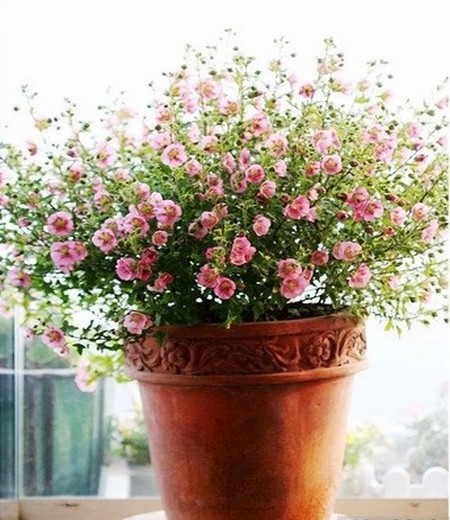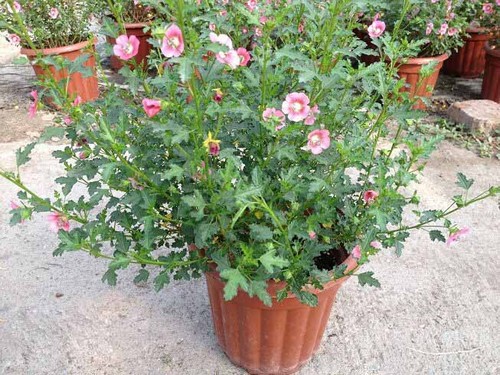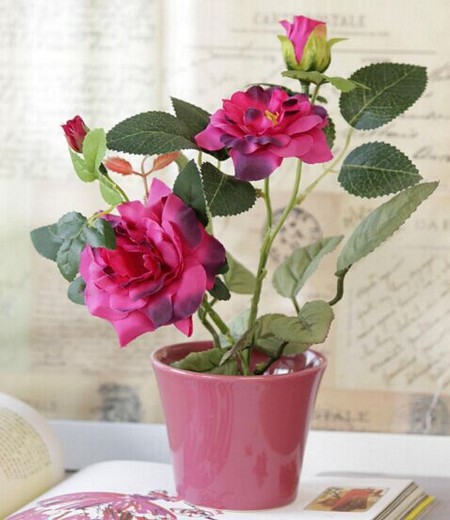Key Points of Hibiscus Conservation
Hibiscus blossoms in summer and autumn, the flowering period is very long, and there are many varieties and varieties of flower color and flower pattern, which is an excellent garden flowering tree species. It is often used as a hedge and basic planting material, which should be planted on the lawn, roadside or forest edge, or can also be used as a hedge or in combination with other flowers and trees. Because its branches are soft and resistant to pruning, they can be modeled to make pile scenes or potted plants. At the same time, it also has strong resistance, and it is also an excellent greening tree species for factories and mines.

Key points of maintenance:
Deciduous shrub, 3cm high. Leaves rhomboid to triangular ovate, solitary flowers like mallow, there are lilac, red, white, powder and other colors, toward the twilight, edible. The management is relatively extensive. Like warm, humid climate, but also very hardy. Like light, endure half-yin. Resistant to drought, not resistant to water and moisture. It has strong adaptability and lax requirements for soil, and can grow normally in barren gravelly soil or slightly alkaline soil, but it is better to have deep, fertile and loose soil. Strong sprouting and resistant to pruning. Keep the soil moist during the growing period. Fertilization was applied once before sprouting in spring, and phosphate fertilizer was applied twice during flowering period from June to October. Control plant shape and posture by pruning, preferably pruning to 2 feet high in winter and pruning again in March, but not too much. Transplantation should be carried out after defoliation.
Daily maintenance methods:
1. Soil: hibiscus has strong adaptability and lax requirements on soil, and can grow normally in barren gravelly soil or slightly alkaline soil, but it is better in deep, fertile and loose soil.
2. Watering: during the growth of hibiscus, attention should be paid to keeping the soil moist, long-term drought and no rain, irrigation should be paid attention to, and Rain Water should be drained to prevent waterlogging when there is too much.
3. Sunshine: hibiscus likes light and is resistant to semi-shade. During the growth period, you should pay attention to providing sufficient light, but it is not suitable for too strong sunlight.
4. Temperature: hibiscus likes warm climate, the temperature of 18-25 ℃ is the best, and it is slightly resistant to cold.
5. Fertilization: when hibiscus sprouted, it should be topdressing in time, mainly quick-acting fertilizer to promote vegetative growth; topdressing phosphorus and potassium fertilizer twice before budding to promote plant budding; and topdressing twice with weeding and soil cultivation during the period from May to October, mainly phosphorus and potassium fertilizer, supplemented by nitrogen fertilizer, in order to maintain flower quantity and tree potential.
What if the hibiscus leaves turn yellow?
1. Pay attention to watering
Hibiscus does not have high requirements for water, so it is OK to keep it moist and not dry during its growth, but if it is watered too little, or if it does not pay attention to drainage and too much water, it will cause hibiscus leaves to yellowing and fall, so even if hibiscus does not have strict requirements for water, we should also pay attention to maintaining the supply and treatment of water.
2. Fertilization is reasonable
Many people hope that hibiscus can grow vigorously and blossom, so they will pay attention to fertilizing hibiscus. In fact, hibiscus is mainly based on phosphorus and potassium fertilizer, supplemented by nitrogen fertilizer and reasonable topdressing. If you apply too much fertilizer, it will be troublesome. The most obvious thing is to burn the roots, resulting in leaves yellowing and falling off, so if the hibiscus leaves yellowing and falling after fertilization, you should pay attention to check whether it is the problem of excessive fertilization.
3. Spray and kill aphids
Aphids are very common pests, and they are also dangerous to the growth of hibiscus. Aphids suck more leaf juice, the leaf juice on the leaf surface sucks dry, and the leaves slowly turn yellow, so the leaves turn yellow to see if it is caused by aphids. If so, you can spray 1000 times of omethoate EC.
Time: 2019-06-01 Click:
- Prev

How to raise potted hibiscus
Hibiscus flowers bloom and fall at dusk, but each time they wither in order to bloom more brilliantly next time. Just like the sun continues to set and rise, just like the four seasons turn from spring to autumn, but it is endless. More like loving a person, there will be low ebbs and troubles, but those who know how to love will still persist gently.
- Next

Cultivation method of potted rose flower
Rose flower is a common flower, generally in the home mainly in the courtyard, balcony and other places planted. Rose flower is a common flower loved by people, so rose breeding methods have those? The following small series will teach you how to raise roses, so that you can create a small fresh home environment
Related
- Fuxing push coffee new agricultural production and marketing class: lack of small-scale processing plants
- Jujube rice field leisure farm deep ploughing Yilan for five years to create a space for organic food and play
- Nongyu Farm-A trial of organic papaya for brave women with advanced technology
- Four points for attention in the prevention and control of diseases and insect pests of edible fungi
- How to add nutrient solution to Edible Fungi
- Is there any good way to control edible fungus mites?
- Open Inoculation Technology of Edible Fungi
- Is there any clever way to use fertilizer for edible fungus in winter?
- What agents are used to kill the pathogens of edible fungi in the mushroom shed?
- Rapid drying of Edible Fungi

